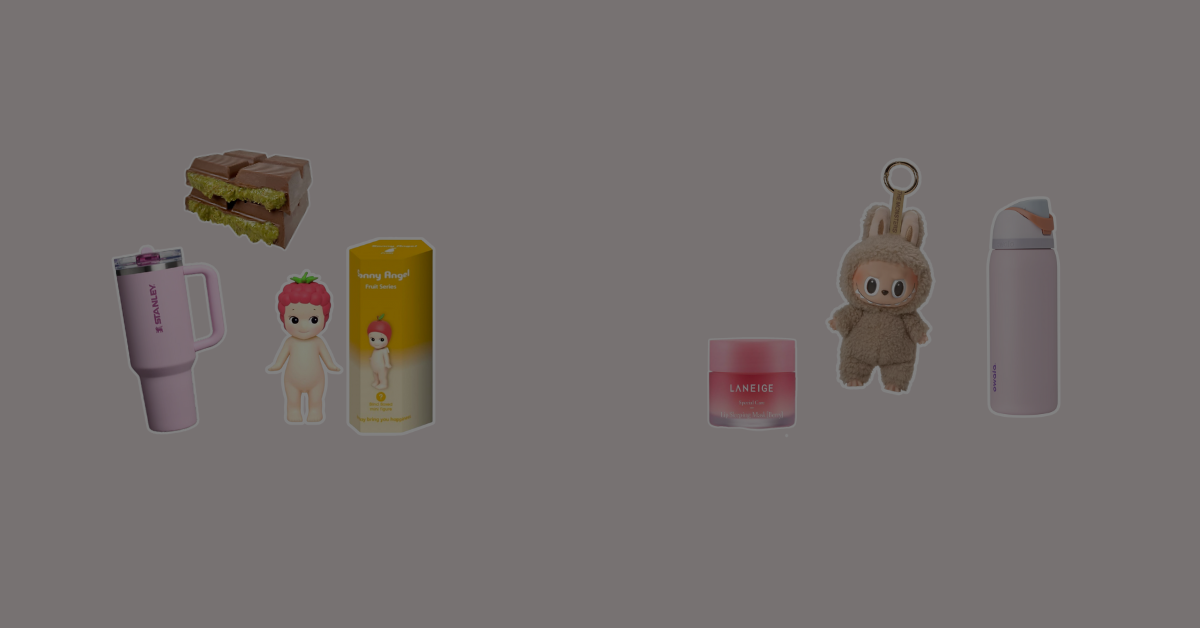Whether bold and energetic or soft and sophisticated, brand colors should align with a company’s values and messaging to create a lasting impression. Choosing the right colors isn’t just about aesthetics—it’s a strategic decision that plays a crucial role in a brand’s success. Let's look into each color and what they could represent for your brand.
TLDR / Key Takeaways
- Color psychology exists for brands too!
- Colors evoke feelings from your audience.
- As a brand, it is important to pick a color that aligns with your brand's personality and message.
- To find your brand's coloring, you have to look at your target audience and what resonates with them.
What is Color Psychology?
Understanding color psychology goes beyond just the surface level of aesthetics. It delves deep into the subconscious impact that each color has on our psyche, influencing our emotions, behaviors, and perceptions in ways we may not even realize. From the boldness of red to the tranquility of blue, every color choice holds a power that can either attract or repel consumers. It's not just about what looks good, but about how colors can strategically convey your brand's message and connect with your target audience on a deeper level.
Colors are not just visual elements; they are powerful tools that can evoke specific feelings and associations. For example, the warmth and passion of red can draw attention and ignite a sense of urgency, while the freshness and vitality of green can promote a feeling of well-being and environmental consciousness. By tapping into the psychological impact of colors, you can create a brand identity that speaks volumes about who you are and what you stand for.
In a world where visual communication is key, the importance of choosing the right colors for your branding cannot be overstated. It's not just about what looks good on paper; it's about how colors can shape the way consumers perceive and interact with your brand. So, next time you're selecting brand colors, remember that you're not just picking a palette - you're crafting a visual language that speaks directly to the hearts and minds of your audience.

The Importance of Brand Colors
The colors you choose for your branding and logo are more than just a visual choice – they are a key component of your overall marketing strategy. These colors are the very first impression your audience will have of your brand, and they play a crucial role in shaping how consumers perceive and connect with your business. In fact, colors are so powerful that they can serve as a strong brand identifier, instantly communicating your brand's identity and values to your target audience.
Each color carries its own unique meaning and symbolism, making it essential to select colors that align with your brand's personality and message. Whether you opt for the boldness of red, the energy of orange, the optimism of yellow, the freshness of green, the trustworthiness of blue, the creativity of purple, the sophistication of black, the purity of white, the stability of brown, or the playfulness of pink, each color choice can evoke specific emotions and associations in your audience.
By carefully selecting the right colors for your branding, you can create a cohesive and memorable brand identity that resonates with your target market and sets you apart from the competition. So, when it comes to choosing brand colors, remember that every shade has a story to tell – make sure yours is one that speaks volumes about who you are as a brand.
Picking your Brand Colors
When choosing the ideal brand colors, it's essential to consider several key factors. Firstly, understanding your target audience is crucial - knowing who they are, what resonates with them, and the emotions they need to feel to connect with your brand. By aligning your color choices with your brand's values and messaging, you can effectively set yourself apart in a competitive market.
Cultural considerations are also important when looking at brand colors, especially for brands with a global presence. Colors carry different meanings in various cultures, like red in Asia versus America. So it's vital to ensure that your chosen palette aligns with the perceptions of your target market. Color preferences can vary based on factors such as age, social status, gender, and religion, highlighting the importance of understanding your audience deeply. Ultimately, let your brand's personality traits guide your color selections, forming the foundation of a cohesive and impactful visual identity.
What Does Each Color Represent?
What Does Red Represent?
Red represents attention-grabbing, warmth, power, and passion.
Although red can stimulate consumers to feel passion and power- on top of attention grabbing; it should be used in moderation. Red, being very power, can also evoke a feeling of anger for consumers.
Red is also known to raise blood pressure, and makes people hungry.
Some famous brands with red logos are Netflix, Chick-fil-a, and Target.
Popular Brands with Red Logos
.png?width=545&height=202&name=Netflix%20Chick%20Fila%20A%20Target%20Logo%20(1).png)
What Does Orange Represent?
Orange represents affordability, creativity, friendliness, and playfulness.
Orange is a vibrant, energetic color that captivates consumers, inspiring exploration and enthusiasm. It combines red and yellow qualities for a harmonious balance of passion and optimism, making it ideal for brands seeking to make a bold statement and deepen their connection with their audience. It can be seen as exciting, and may drive appetite as well.
Some famous brands with orange logos are Nickelodeon, Soundcloud, and Etsy.
Popular Brands with Orange Logos

What Does Yellow Represent?
Yellow represents being joyful, curiosity, happiness, comfort, and optimism.
It's no surprise that many brands incorporating yellow aim to create a sense of affordability and attention-grabbing appeal. Yellow has the ability to instantly uplift moods and catch the eye of consumers, making it a popular choice for brands looking to stand out in a crowded market.
Its vibrant and cheerful nature makes it an ideal option for companies wanting to convey approachability and positivity, drawing customers in with its sunny disposition. If you're looking for a color that exudes warmth, optimism, and captivation, yellow could be the perfect choice for your brand.
Some famous brands with yellow logos are McDonalds, National Geographic, and Snapchat.
Popular Brands with Yellow Logos

What Does Green Represent?
Green represents wealth, growth, environmental, fresh.
So when you think about incorporating green into your branding, keep in mind that it symbolizes vitality, renewal, and a strong connection to nature. It's a color that promotes sustainability, health, and a sense of well-being. Green has a calming effect on both the eyes and the mind, making it a refreshing choice that evokes feelings of peace and tranquility. By choosing green, you're not just choosing a color – you're also embracing environmental consciousness and a harmonious relationship with the world around you and your consumers.
Some famous brands with green logos are Starbucks, Whole Foods, and Spotify.
Popular Brands with Green Logos

What Does Blue Represent?
Blue represents professionalism, security, and formality.
Blue is a versatile color often favored by government and medical companies for its professional and reliable appeal. It conveys a sense of security and success, making it a popular choice for businesses that value stability and credibility. It's important to use blue in moderation to maintain a welcoming atmosphere, striking a balance between warmth and trustworthiness in branding.
Some famous brands with blue logos are Geico, Ford, and Linkedin.
Popular Brands with Blue Logos

What Does Purple Represent?
Purple represents royalty, mystery, creativity, sophisticated, and luxury.
Purple is a harmonious blend of red and blue, creating a color that exudes both confidence and warmth. This unique combination of hues makes purple a symbol of wisdom and imagination, invoking a sense of creativity in consumers. The lighter shades of purple have a soothing and calming effect, making them perfect for brands looking to convey a sense of tranquility and peacefulness. Whether it's the regal undertones of darker purples or the gentle innocence of lighter shades, purple is a versatile color that adds a touch of sophistication and creativity to any brand's identity. So, when considering your brand colors, do not underestimate the powerful impact that purple can have in connecting with your audience on a deeper level.
Some famous brands with purple logos are Hallmark, Cadbury, and Yahoo.
Popular Brands with Purple Logos

What Does Black Represent?
Black represents powerful, elegance, serious, edgy, classic, and modern feel.
Black is a sophisticated and timeless color that exudes elegance and seriousness. Its sleek and classic appeal can elevate your brand, adding a touch of luxury and modernity. It's important to be mindful of the associations that black can evoke, such as mourning and sadness. To strike the right balance, consider using black in moderation to convey sophistication without overwhelming your audience with negative connotations. By strategically incorporating black into your branding, you can create a professional image that resonates with your target market, leaving a lasting impression of style and refinement. Remember, less is often more when it comes to harnessing the powerful and versatile qualities of black in your brand colors.
Some famous brands with black logos are Adidas, Prada, and Apple.
Popular Brands with Black Logos

What Does White Represent?
White represents cleanliness, virtue, pure, health and simplicity.
White is the blank canvas of the color spectrum, symbolizing purity, simplicity, and cleanliness. Its versatility suits a wide range of industries, from everyday products to luxury brands, conveying openness and clarity for a minimalist and sophisticated image. Whether as the main color or a supporting element, white adds elegance and refinement to a brand's visual identity, allowing other colors to shine and creating a cohesive aesthetic. Don't underestimate the impact of white in branding - it's a timeless choice that can elevate your brand and resonate with a diverse audience.
Some famous brands with white logos are Crocs, The North Face, and White Claw.
Popular Brands with White Logos

What Does Brown Represent?
Brown represents a natural and earthy feeling, as well as rough, and utility.
Brown evokes a natural and earthy feeling, conveying authenticity and tradition. Its warm tones create a vintage look that resonates with consumers, adding reliability and trustworthiness to your brand. Incorporating brown can showcase a connection to the past while remaining relevant and approachable in the market, speaking volumes about your brand's values and personality.
Some famous brands with brown logos are UGG, UPS, and Mrs. Meyers.
Popular Brands with Brown Logos

What Does Pink Represent?
Pink represents a feminine, innocent, and gentle tone.
Pink is a versatile color that can range from modern to luxurious, making it a perfect choice for brands looking to evoke a sense of sophistication and elegance. Its soft and feminine hue gives your business a playful and romantic feel, drawing in customers with its charming and alluring qualities. Pink is often used to add a touch of female appeal, appealing to a diverse audience and creating a sense of inclusivity. It represents innocence and delicateness, creating a sense of purity and grace that can resonate with consumers on a deep emotional level. Incorporating pink into your branding can add a unique and captivating element that sets your brand apart and leaves a lasting impression on your target market. So, don't underestimate the power of pink in conveying a sense of beauty and charm that speaks volumes about your brand's identity and values.
Some famous brands with pink logos are Barbie, Cosmopolitan, and Pink.
Popular Brands with Pink Logos

Color Combinations
When it comes to selecting color combinations for your brand, it's essential to remember that less is more. Instead of overwhelming your audience with a rainbow of colors, it's best to keep things simple and focused. By sticking to two or three carefully chosen colors, or even opting for a single logo color, you can create a cohesive and visually appealing brand identity that resonates with your target market.
Limiting your color palette allows you to maintain a sense of consistency and professionalism in your branding. It helps to avoid visual clutter and ensures that your message remains clear and impactful. By carefully selecting a few key colors that complement each other and align with your brand's values, you can create a harmonious and memorable visual identity that sets you apart from the competition.
So remember, when it comes to logo color combinations, restraint is key. By keeping it simple and focusing on a select few colors, you can create a powerful and effective brand identity that leaves a lasting impression on your audience.
But how can you ensure that these colors look good together, as well as being accessible for readers? We recommend using a color contrast checker to ensure readers can clearly see your color combination.
Conclusion
The colors you choose for your brand are more than just a visual aspect - they play a crucial role in shaping how your audience perceives your business. From the bold and attention-grabbing power of red to the vibrant and energetic playfulness of orange, each color has its own unique impact on consumer emotions and perceptions. The comforting warmth of yellow can instantly uplift moods and catch the eye of consumers, while the professional and reliable appeal of blue conveys a sense of security and trustworthiness.
Whether you opt to use these colors individually or in combination, it's essential to consider the deeper meanings and associations they hold in order to craft a cohesive and impactful brand identity. By understanding the psychology behind color choices and aligning them with your brand's values and messaging, you can create a visual representation that resonates with your target audience and sets you apart in a competitive market. So, don't underestimate the power of color in shaping how your brand is perceived - it's a critical element in building a strong and memorable brand identity.
Frequently Asked Questions (FAQs)
What are brand colors?
Brand colors are the essential palette of approximately five to ten hues specifically chosen to embody a particular company. By consistently and strategically applying these colors, brand awareness and recognition can significantly increase.



